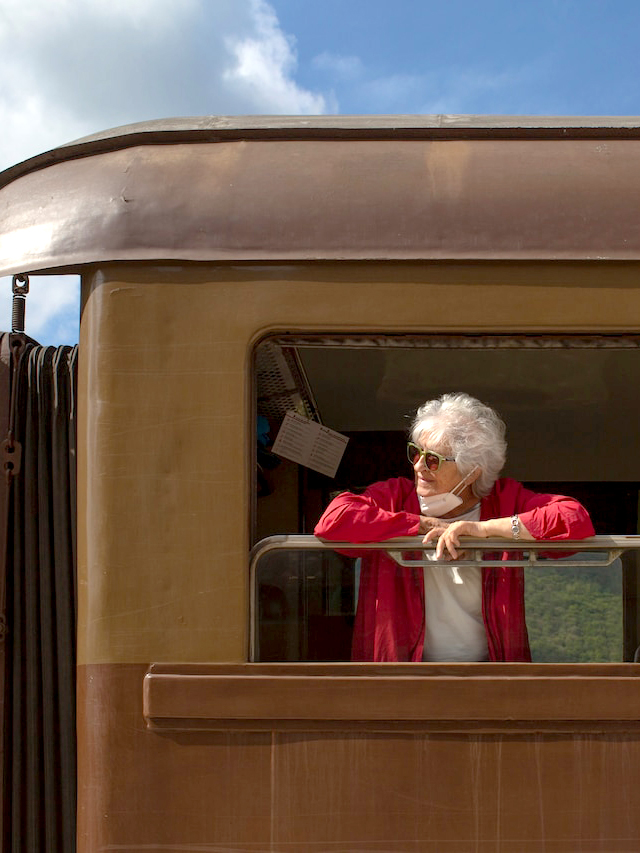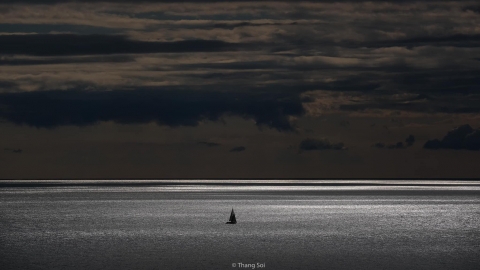Since its inception in 1897, the Sulmona to Carpinone train has been hailed as an engineering masterpiece, for its ability to navigate and travel the steep slopes of the Abruzzo region. The route, which stretches over 117km, remains the second highest in Italy – reaching heights of 1,268m in the Maiella mountains – and traverses areas that remain roadless to this day.
The train shutdown has had far-reaching consequences, not just in terms of traffic or transportation. The closure of the Sulmona-Carpinone line also means the severing of a blood link to the past, to an era when such trains helped to bring Italy together after decades of conflict in the 19th century.
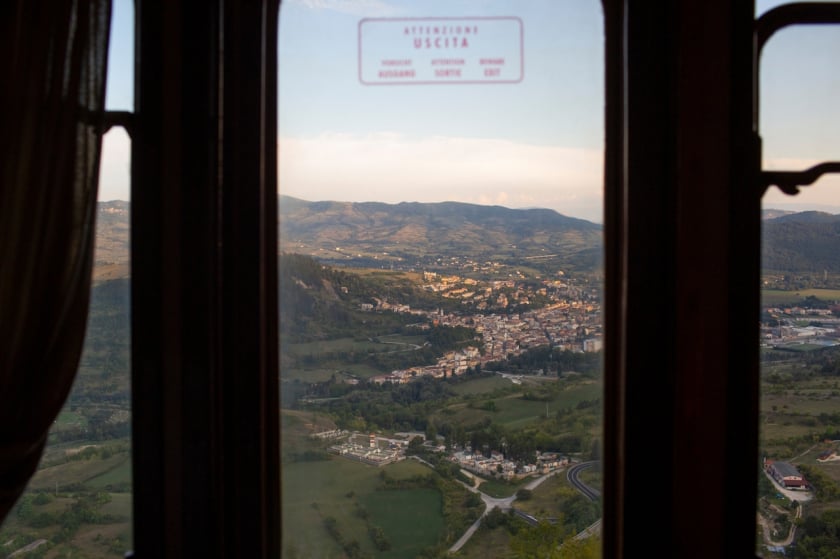
From the train, visitors can see the town of Castel di Sangro, with meadows and fields stretching out beyond the urban center.
Now, the line has been restored, and the train is chugging back to its real station. Photographer Chiara Negrello has an apartment in Florence, the capital of the Tuscany region in central Italy. She loved the rhythm of the train as it passed through the region, and decided to drive five hours to Sulmona to experience the entire line, with only a camera in her hand. On the journey, Chiara captured the fragments of life she encountered, moments that people often overlook, in places where time seems to slow down, and travelers have the opportunity to return to a time in Italy long gone.
The journey begins in Sulmona, a two-hour drive east of Rome.
Like other towns along the train route, Sulmono offers a glimpse of old Italy, with ancient stone buildings, bustling outdoor markets selling seasonal specialties, and live musicians performing on the streets.
At 8:30 a.m., volunteers lined up at the station, enthusiastically welcoming passengers onto the single, whistle-blowing train. The entire north-south route took 12 hours round trip, with stops at five major cities along the way to Isernia, just north of Naples.
The train's interior is filled with historical details: ornate railings, glass lamps, vintage heaters and emergency brakes, prints of famous Italian paintings on the walls, wooden benches, and velvet-lined passenger compartments.
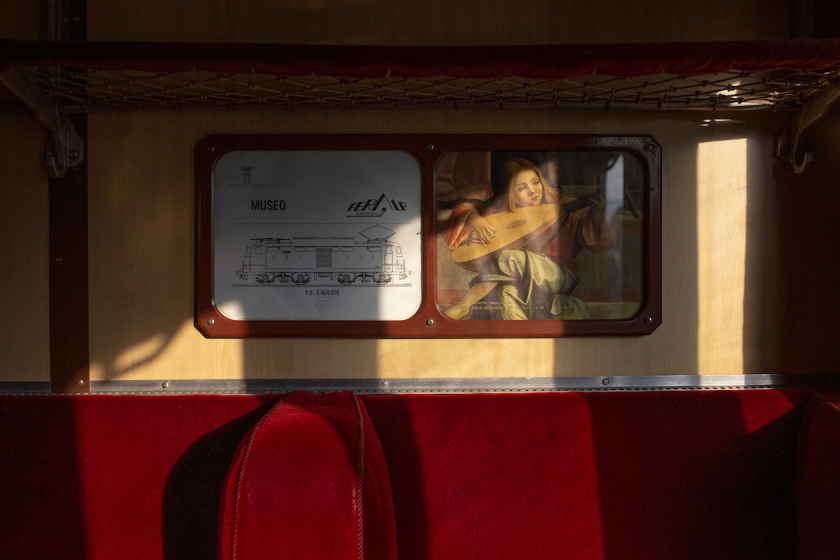
Each train car features famous Italian paintings and train information.
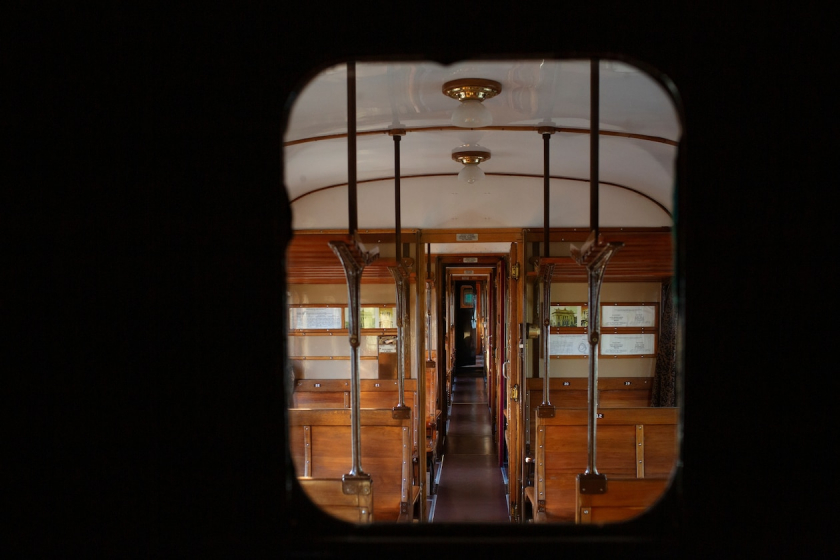
The curved decorative details on the railings and ceiling reflect the design style of the 1930s.
The scenery changed constantly as the train rolled. Outside the window, Chiara saw rolling pastures with grazing sheep, and towering mountains with aqueducts built in ancient Rome. It was a wild and natural world, a world that existed long before human civilization. Curious animals stopped along the tracks, sometimes trying to run after the train. This was the land of many rare animals, such as the Marsican brown bear. Wolves, lynx, marten, plovers and red-billed crows were also familiar inhabitants of these mountains.

A woman smiles at the beauty of the Abruzzo region of Italy
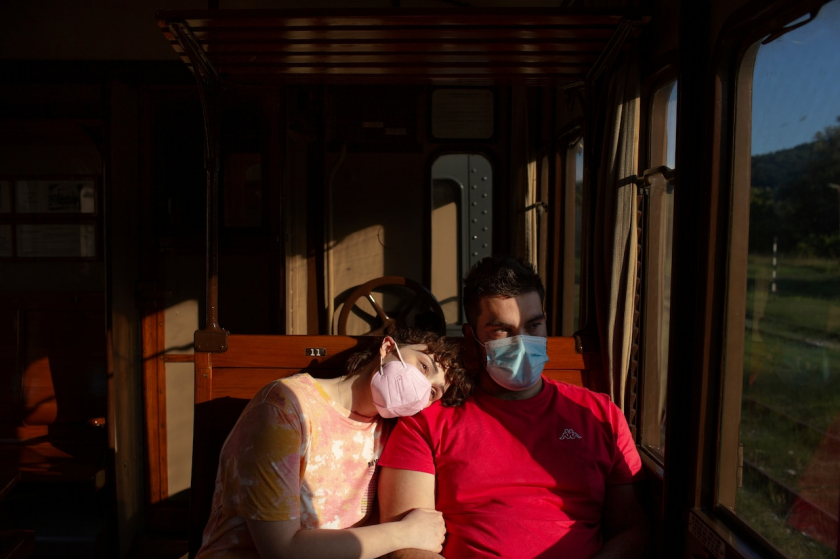
A couple watches the sunset on a train
There were all kinds of passengers on the train, from all walks of life. The photographer listened quietly to the stories being shared: the elderly commuters who regularly took this route to work, because they felt like they were returning to their youth; a group of women who bought first-class tickets to take their annual vacation; a man who held his dog up to the window so they could both enjoy the passing scenery. People took this train for all kinds of reasons.
Townspeople waved as the tourists disembarked from the train station, musicians played music and couples danced in the streets. Life in these towns was a stark contrast to the crowded, noisy coastline.
The train stops at almost every station for hours, giving travelers like Chiara time to explore. She follows the others, finding local restaurants and sampling regional dishes, such as marinated meats, focaccia, Molise mozzarella and caciocavallo curd.
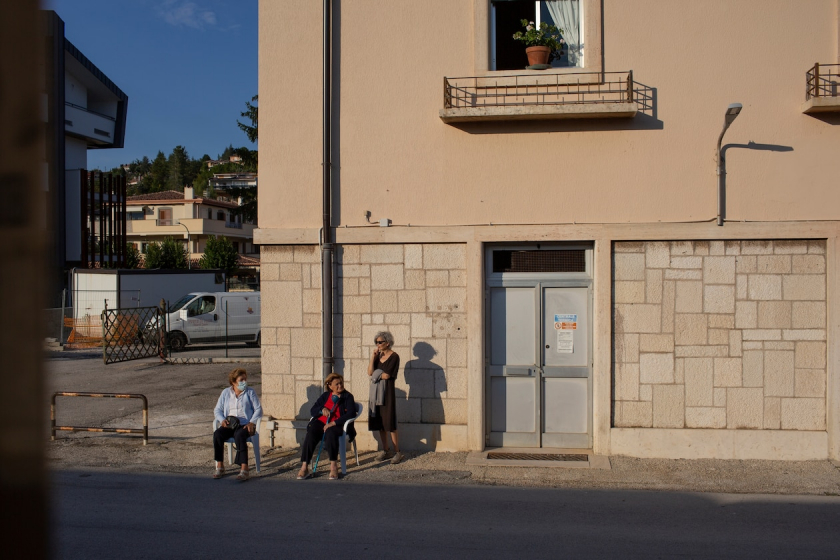
Women on a street corner, from the train window
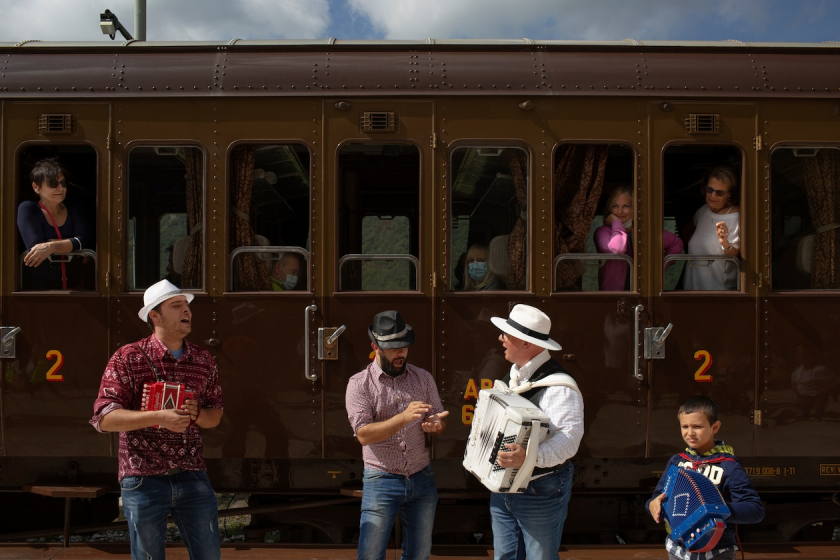
Passengers on board enjoy the performance of “Lu chiov e cicalin” by street musicians in the town of Palena
Train travel - an Italian heritage
The Sulmona-Carpinone railway is one of the most iconic routes in Italian culture and history. The golden age of railways in the country lasted from 1860 to 1873, directly overlapping the period of Italian unification. During this time, the different states of the Italian peninsula were united into the single Italian monarchy we know today.
In the early 1900s, Italy underwent a major infrastructure overhaul. Initially, dozens of steam trains sprang up, providing transportation for millions of people. The development of the railways coincided with the Italian industrial revolution, as steam locomotives replaced animal power. In later years, electricity and diesel became the main sources of energy, but the railways remained a symbol of progress and modernization for the entire country. The Sulmona-Carpinone line opened at the height of the industrial revolution, immediately becoming a promise of the future.
Since its inception, the train has been in continuous operation through war and natural disasters. During World War II, it played a vital role in delivering supplies to the military camps surrounding the railway. After the Germans destroyed the line, it took decades to repair it. When the train was fully restored in the 1960s, passenger numbers were nowhere near what they had been.

Rivisondoli Pescocostanzo station is the second highest train station in Italy, at 1,200 m above sea level.

The train stops at Campo di Giove, on the southern slopes of the Maiella Mountains.
In 1980, a new nickname arose that piqued the interest of many. Italian journalist and writer Luciano Zeppegno was so impressed by the mountain scenery along the Sulmona-Carpinone route that in an article he dubbed it the “Little Trans-Siberian.” Although the train does not operate anywhere near Siberia, the name has stuck to this day, becoming an effective tourist attraction.
In 2014, the Fondazione FS Italiane, a state agency, reopened the line as part of a project to revitalize 10 Italian railways to stimulate sustainable tourism. The train was revived, and became wildly popular, with a peak of 31,000 passengers in 2019. After a long shutdown due to the Covid-19 pandemic, the train reopened in June this year to enthusiastic support, despite only running one train per weekend. From December to the end of January, there will be more trains, to serve the annual holiday season.
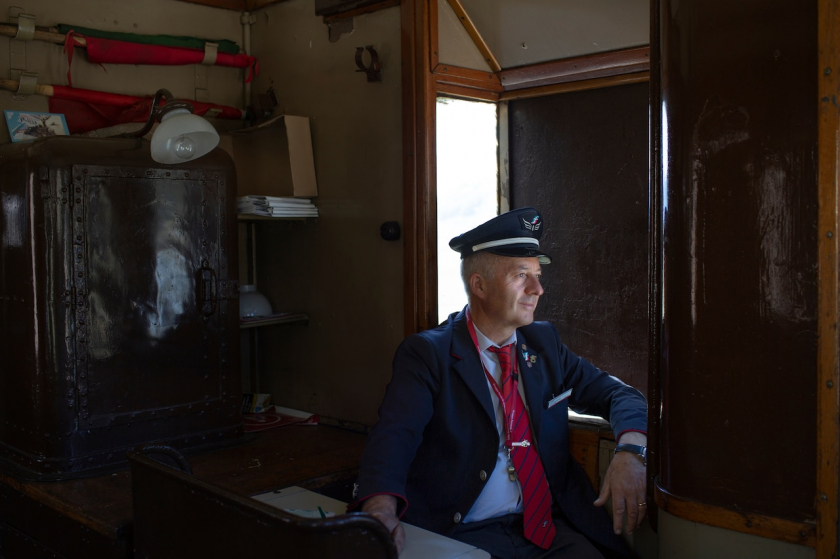
Every weekend, Captain Marcello D'Amico steps into the cockpit to take control of the historic ship.
According to the head of the Sulmona-Carpinone railway, "Trains are the best form of discovery and adventure. Because on one train, at the same time, you can listen to thousands of different stories, from different people."

A woman enjoys the mountain view on the Sulmona-Carpinone railway line
"I boarded the train in late autumn. As we crossed the Abruzzo plateau in the afternoon, the mountain slopes looked as if someone had poured red and yellow ink over them. The mountains are painted in different colors each season, white with snow in winter, then emerald green in summer.
Passing the final stops in Carpinone and Isernia, the train heads straight back to Sulmona. The journey back feels like waking up from a sweet dream of distant lands.
And as night fell, the old lamps cast a warm glow throughout the train. Outside, the lights of the small towns along the mountainside flickered in the distance" - Chiara Negrello.





